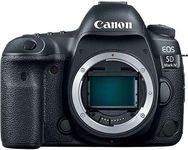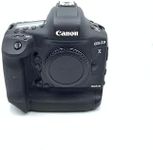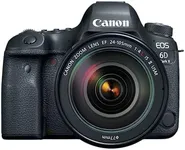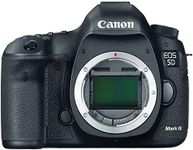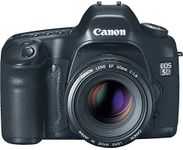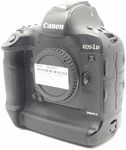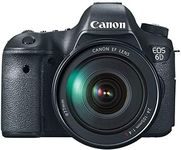Buying Guide for the Best Full Frame Canon Dslr
Choosing the right full-frame Canon DSLR can be a rewarding experience, especially if you understand the key specifications that matter most. Full-frame DSLRs are known for their superior image quality, low-light performance, and depth of field control. To make an informed decision, you need to consider several important specs that will align with your photography needs and preferences.Sensor ResolutionSensor resolution, measured in megapixels (MP), determines the amount of detail your camera can capture. Higher resolution sensors (e.g., 30MP and above) are great for large prints and cropping images without losing detail. Mid-range resolutions (around 20-30MP) offer a good balance between detail and file size, suitable for most photography needs. Lower resolutions (below 20MP) can still produce excellent images, especially in low-light conditions, and are often faster in terms of shooting speed. Choose a resolution based on your need for detail and how you plan to use your photos.
ISO RangeThe ISO range of a camera indicates its sensitivity to light. A wider ISO range allows for better performance in various lighting conditions. Cameras with high ISO capabilities (e.g., up to 102,400) are ideal for low-light photography, such as night scenes or indoor events. Mid-range ISO capabilities (up to 25,600) are sufficient for most general photography needs. If you primarily shoot in well-lit environments, a lower ISO range will suffice. Consider your typical shooting conditions to determine the right ISO range for you.
Autofocus SystemThe autofocus (AF) system is crucial for capturing sharp images, especially in fast-paced or dynamic situations. Advanced AF systems with more focus points (e.g., 45 points and above) provide better accuracy and tracking of moving subjects, making them ideal for sports, wildlife, and action photography. Mid-range AF systems (around 20-45 points) are versatile and suitable for most types of photography. Basic AF systems (fewer than 20 points) can still perform well for portraits and landscapes. Choose an AF system based on the type of subjects you frequently shoot.
Frame RateFrame rate, measured in frames per second (fps), determines how many images a camera can capture in a second. Higher frame rates (e.g., 10 fps and above) are beneficial for action and sports photography, where capturing the perfect moment is critical. Mid-range frame rates (around 5-10 fps) are adequate for most general photography needs, including portraits and landscapes. Lower frame rates (below 5 fps) are suitable for static subjects and controlled environments. Consider the speed of your subjects and your shooting style when choosing the frame rate.
Build Quality and Weather SealingBuild quality and weather sealing are important for durability and reliability, especially if you shoot in challenging environments. Cameras with robust build quality and full weather sealing are ideal for outdoor and adventure photography, as they can withstand dust, moisture, and rough handling. Mid-range build quality with partial weather sealing is suitable for most general photography needs and occasional outdoor use. Basic build quality without weather sealing is best for controlled environments and studio work. Think about where and how you will use your camera to determine the necessary level of build quality and weather sealing.
Video CapabilitiesIf you plan to shoot videos, consider the camera's video capabilities. Look for features like 4K resolution, high frame rates (e.g., 60 fps or higher), and advanced video autofocus. Cameras with these features are ideal for professional videography and high-quality content creation. Mid-range video capabilities (e.g., Full HD at 60 fps) are sufficient for most casual and semi-professional video needs. Basic video capabilities (e.g., Full HD at 30 fps) are suitable for simple video recording and vlogging. Determine your video production needs to choose the right video capabilities.
